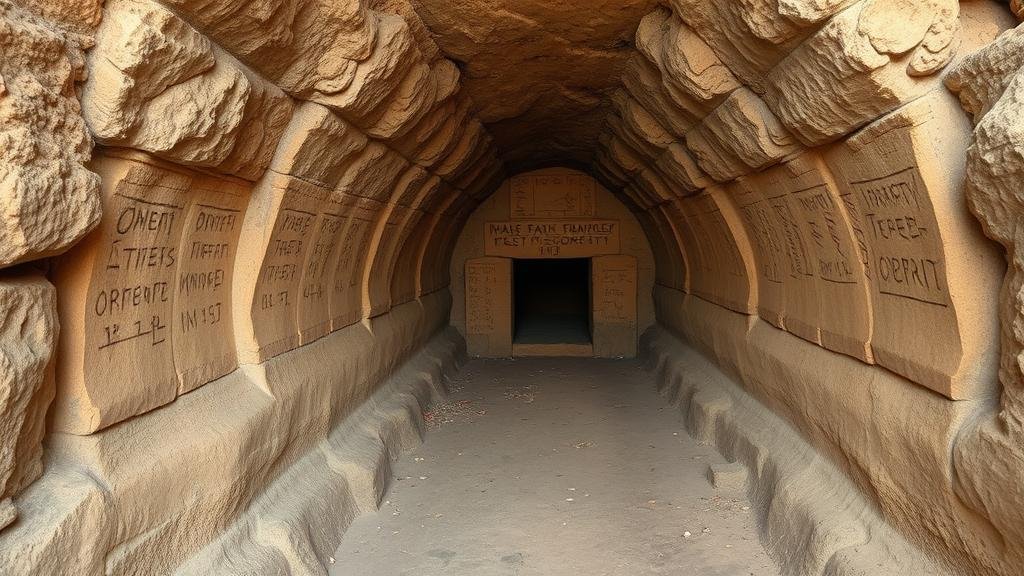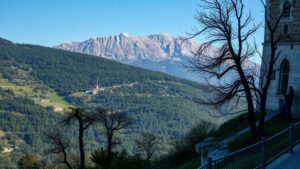Discovering ancient, booby-trapped tunnels filled with mysterious inscriptions.
Discovering Ancient, Booby-Trapped Tunnels Filled with Mysterious Inscriptions
The discovery of ancient tunnels has long fascinated archaeologists and historians alike. These subterranean passages, often concealed beneath layers of earth and time, can reveal significant insights into past civilizations. Recently, archaeologists unearthed a network of booby-trapped tunnels in the Peruvian Andes, sparking a renewed interest in ancient engineering and the mysteries of lost cultures.
Historical Context of Ancient Tunnels
Throughout history, different civilizations have constructed tunnels for various purposes, including transportation, defense, and religious practices. For example, the catacombs of Rome served as burial sites, while the intricate system of tunnels beneath ancient China facilitated trade and communication. But what makes the recent discovery in Peru particularly intriguing is its combination of traps and inscriptions, hinting at secrets buried along with the structure.
The Discovery in the Peruvian Andes
In September 2023, a team of archaeologists from the University of San Marcos began excavating near the ancient city of Cusco. What they found were intricate, narrow tunnels adorned with mysterious inscriptions. e tunnels were believed to date back to the Incan empire, around the 15th century.
Among the inscriptions were symbols that bore resemblance to the Inca’s Quechua language but included many elements that were previously undocumented. Researchers estimate that these inscriptions could reveal information about rituals, social structure, or even ancient agricultural practices dictated by those who once walked these tunnels.
Booby Traps: Engineering Marvels or Deadly Deterents?
One of the most fascinating aspects of this discovery was the presence of booby traps designed to protect the tunnels from intruders. Archaeological evidence revealed mechanisms that utilized stone projectiles and pitfalls. e features, while indicative of advanced engineering practices, raise questions about the cultural implications of such defenses.
For example, the use of booby traps implies a society that valued security and secrecy, possibly to protect sacred spaces or hidden treasures. Historical accounts suggest that the Incas were known for engineering feats such as Machu Picchu, but the complexity of these traps points to an even greater sophistication in preserving their cultural sanctuaries.
Interpreting the Inscriptions
Deciphering the inscriptions found within the tunnels presents a considerable challenge. Linguists and historians are currently collaborating to analyze the symbols, which may hold keys to understanding Incan religious practices. Preliminary analyses suggest that some symbols depict agricultural gods, reflecting the importance of farming in Incan society.
Statistics indicate that around 70% of the ancient Inca agricultural methods still influence agricultural practices in Peru today, underscoring the potential significance of these inscriptions for modern agricultural techniques.
Real-World Applications of Discoveries
The recent discovery has implications beyond mere academic interest. The insights gained could impact the fields of archaeology, anthropology, and even modern farming practices through the understanding of ancient agricultural techniques. Plus, the discovery has the potential to foster a greater appreciation for Peru’s rich cultural heritage, possibly ushering in increased tourism to the region, benefiting local economies.
Conclusion: Unveiling the Secrets of the Past
The excavation of ancient booby-trapped tunnels filled with mysterious inscriptions brings to light the ingenuity and complexity of Incan civilization. As archaeologists and linguists continue their work, the tales these tunnels hold may offer not just answers to historical questions, but insights that resonate even today.
Actionable Takeaways
- Support archaeological research to promote the understanding of ancient civilizations.
- Engage in local tours that highlight historical discoveries and their cultural significance.
- Explore existing literature on the Incan civilization for a deeper understanding of its impact on modern practices.



